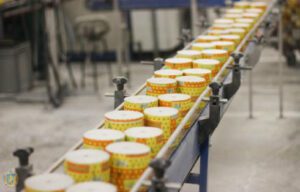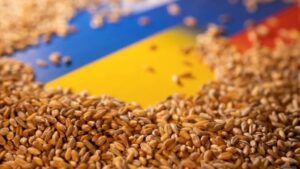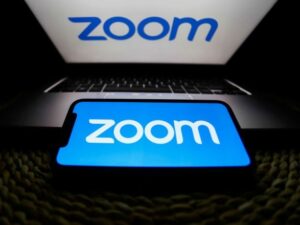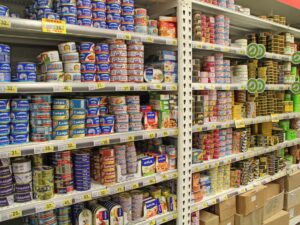
Kokhavinskaya paper mill (KBF, Lviv region), which produces sanitary and hygienic paper products (TM “Kokhavinka”), in January-September 2022, produced products worth UAH 862.57 million, which is 40.8% more than in the same period of 2021.
According to the statistics of the association “UkrPapir”, provided to the agency “Interfax-Ukraine”, thus, the factory has more than 40% increase in production volume of more than 40%, recorded on the basis of seven and eight months.
In physical terms, the production of base paper for sanitary and hygienic products increased by 1.3% – up to 30.2 thousand tons.
At the same time, the production of toilet paper in rolls increased by 16.1% – to almost 97 million pieces, which remains the second largest indicator after the Kyiv KBK (247.7 million pieces).
In general, the main enterprises of the industry during this period produced 429.2 million rolls (-17.2% compared to January-September 2021).
KBF, which has been operating since 1939, produces base paper for sanitary and hygienic products, as well as toilet paper and paper towels. The capacity of paper machines is 19 thousand tons per year, processing equipment is 90 million rolls per year.
The factory has practically not stopped production since the beginning of this year.
KBF in 2021, according to UkrPapir, increased the volume of production of marketable products by 13% compared to 2020 – up to UAH 673.7 million.

Projects for the construction of factories for the production of float glass products in the Zakarpattia and Kirovohrad regions for EUR195 million and $250 million, respectively, have been presented in Ukraine.
According to the presentation by Silverland Industrial Park, the project in the village of Klyucharki (Mukachevskiy district, Zakarpattia region) is estimated at EUR195 million, with 10% of the amount coming from the company’s own investments. The area of the land plot for construction is 19 hectares. The capacity of the production line will be 750 tons/day.
“Before the start of a full-scale war, the demand for glass in the Ukrainian market was 28-30 million square meters per year. Our company will be able to cover at least 50% of this demand. Independent production will reduce dependence on external suppliers, contribute to the post-war reconstruction of Ukraine In the future, there is an opportunity to enter the international export market,” Silverland representative Matvey Isichenko said at the International Investment Fair from UkraineInvest on Thursday.
The project implementation period is two years, the expected payback period is 4 years. The internal rate of return is estimated by the company’s analysts at 10%, the EBITDA margin is 31%.
According to Isichenko, there are no competitors in this area on the Ukrainian market, and the proximity of the enterprise to the western border will allow establishing cooperation with the nearest European countries and reducing logistics costs.
The implementation of the Genesis Engineering float glass plant project in the Kirovograd region is estimated at $250 million, while the company’s own investments will amount to $80 million. The area of land for the construction of the plant is 38 hectares.
“We are planning to build a plant in the central part of Ukraine, which gives us a good balance of access to high-quality raw materials and the target market, both domestic and export,” said Georgy Idiatullin, owner of Genesis Engineering.
The plant’s production capacity will be 510 tons/day, or 18 million square meters. m of glass per year. Products include clear glass 2-19 mm thick, with different finishes and shades. The production is planned to use equipment that will reduce emissions into the environment by 70%.
The implementation of the project will create 340 new jobs. The construction period is 3 years, the expected payback period of the project is 10 years. The internal rate of return is estimated by analysts at 11.28%, the EBITDA margin is 28%. According to the project implementation plan, in the first year of operation, the export income will be approximately $40 million.
Products will be certified according to European standards and export-oriented, Idiatullin said.
“There is a fairly large shortage of such products in the world, and the predicted growth of the world market is 8%, the European market is 6.5% annually. The volume of the world market today is $105 billion, the volume of the Ukrainian market for 2020 was $200 million and was completely dependent on imports “, – said the speaker during the presentation.
According to Opendatabot, Silverland IP LLC was established in May 2022. Among the founders are Andrey Isichenko and Alexander Popov (34% each), as well as Mikhail Lashin (32%).
Genesis Engineering LLC was established in 2014. Its owners are Georgy Idiatullin (50%), Konstantin Shcherban (33%) and Vladlena Kisilenko (16%).

The departure of 10 ships with 169.3 thousand tons of agricultural products is scheduled from the ports of Greater Odessa to the countries of Africa, Asia and Europe on Sunday, the Ukrainian Sea Ports Administration (USPA) reports.
“By 10:00 am, 8 ships left the ports of Greater Odessa, and 2 more are waiting for their turn and favorable conditions,” the agency noted on Facebook.
In total, since the release of the first vessel with Ukrainian food, 3.7 million tons of food have already been exported, and the total number of vessels for the countries of Asia, Europe and Africa has reached 165.
As reported, in Istanbul on July 22, with the participation of the UN, Ukraine, Turkey and Russia, two documents were signed on the creation of a corridor for the export of grain from three Ukrainian ports – Chornomorsk, Odessa and Pivdenny.

Zoom Video Communications, Inc. will provide its products for distance learning, according to the Ministry of Education and Science.
“The Ministry of Education and Science of Ukraine and Zoom Video Communications, Inc. have agreed to grant a license for the unified communication platform Zoom Education and Large Meetings applications for organizing distance learning in educational institutions of Ukraine,” the ministry’s press service said.
It is noted that Zoom will provide a sufficient number of licenses so that every school and institution of higher education in Ukraine can carry out educational programs online.
The agency says that as of today, nearly 800 schools have licensed access to use Zoom tools, allowing millions of applicants to start the 2022-2023 school year on time.

The Cabinet of Ministers has canceled the legislative norm introduced on March 9, which allows importers of food products to import these products into the country, even if the information on the product packaging is not in Ukrainian.
Thus, food market operators can now only import products with a label in the state language, Taras Melnichuk, a representative of the Cabinet of Ministers in the Verkhovna Rada, said in a Telegram channel.
The government made the corresponding change to Decree No. 234 of March 9, 2022 at a meeting on Friday.
“It is excluded … the rule on the temporary possibility for the period of martial law of the sale of food products in the customs territory of Ukraine, information about which is set out in a language other than the state language. It has been established that such food products imported into the territory of Ukraine from March 9 to December 1 can to be in circulation on the customs territory of Ukraine until the expiration of the minimum shelf life or the deadline for consumption (the “use by” date),” Melnychuk said in the message.
Thus, the amended regulation retains the possibility for importers of animal feed to import these products labeled in a language other than the state language.
In addition, the legislative norm remains in force that the labeling of food and feed imported to Ukraine as humanitarian aid can be submitted in a language other than the state language.
The regulation also allows the use of leftover packaging or containers for food and feed left after the closure of enterprises that stopped working as a result of hostilities. In the future, such containers can be used for packaging similar products manufactured at other enterprises.

Zaporizhstal is improving the quality of its metal products due to the improvement of the production process technology.
According to the enterprise, in particular, new conditions have been established in the steelmaking shop for the steelmaking technology. In June, metallurgists began smelting metal on their own carbon, which makes it possible to stabilize metal in molds, as well as reduce the risks of producing metal with increased oxidation in molds. In turn, this will also save on deoxidizers fed into the ladle.
“We found out that this is what has a direct impact on whether we get certain types of defects when rolling metal. We conducted several test melts of steel and decided to apply this technology to some steel grades,” Andriy Riaznov, head of the technical control department, explained.
The use of this steelmaking technology has led to a significant reduction in the formation of defects. This decision is expected to lead to a reduction in the number of nonconforming products by approximately 15-30%.
“So far, we have just started working on this technology, but we are already seeing a positive result. According to preliminary data, the number of nonconforming products was reduced by 15% in June,” Riaznov said.
Zaporizhstal is one of the largest industrial enterprises in Ukraine, the products of which are in great demand among consumers in the internal market and in many countries of the world. The plant specializes in high quality hot-rolled steel, hot-rolled sheet, cold-rolled sheet, cold-rolled coil of carbon and low-alloy steels, as well as steel tape, black sheet, and a bent profile.
PRODUCTS, REDUCE DEFECTS, TECHNOLOGY IMPROVEMENT, ZAPORIZHSTAL